
How to Use BTS7960 Motor Driver: Examples, Pinouts, and Specs
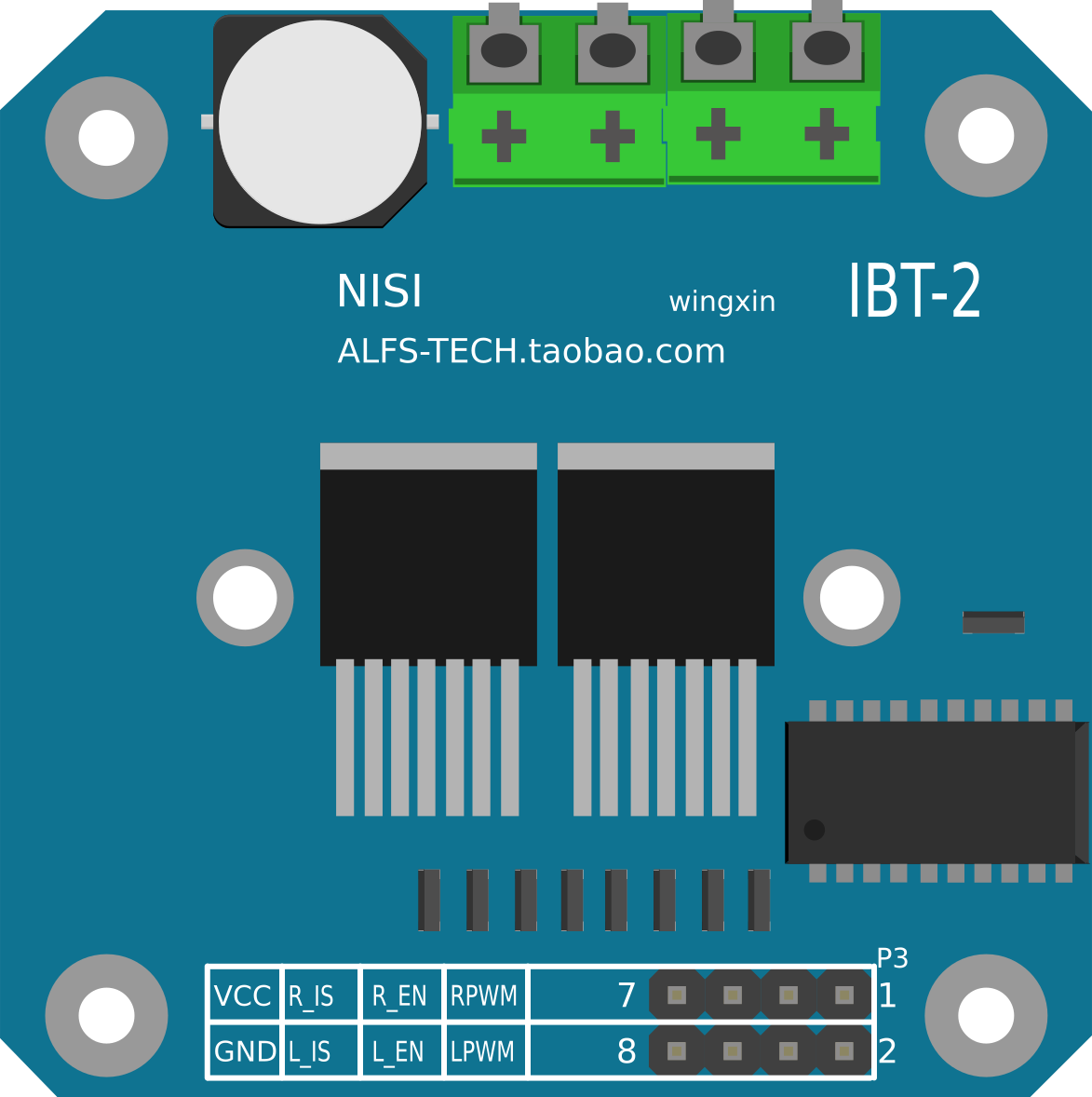
 Design with BTS7960 Motor Driver in Cirkit Designer
Design with BTS7960 Motor Driver in Cirkit DesignerIntroduction
The BTS7960 is a high-current H-bridge motor driver designed for controlling DC motors with precision and efficiency. It supports Pulse Width Modulation (PWM) signals for speed and direction control, making it ideal for applications requiring high power and reliability. The module features built-in protection mechanisms, including overcurrent and thermal overload protection, ensuring safe operation under demanding conditions.
Explore Projects Built with BTS7960 Motor Driver
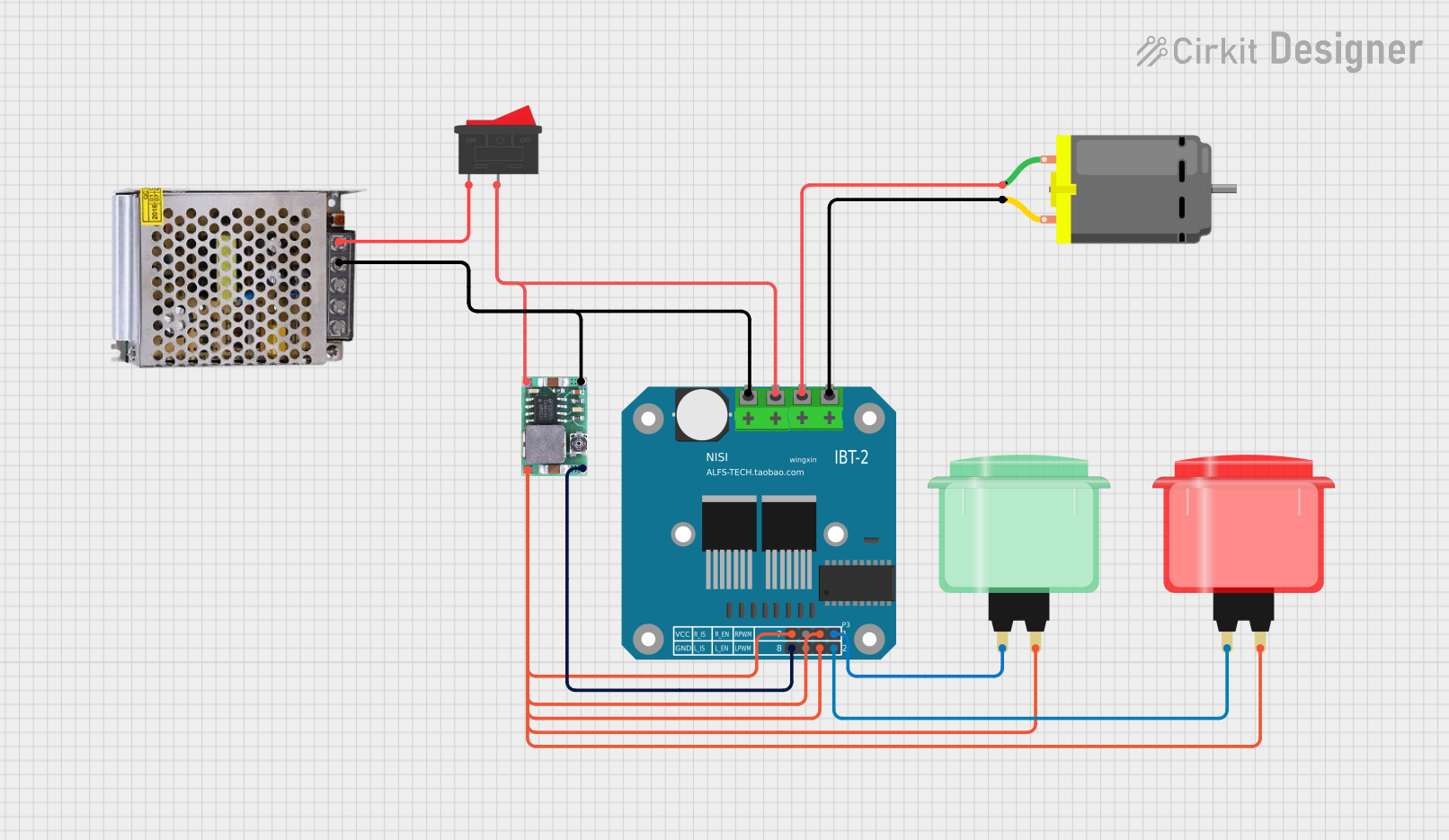
 Open Project in Cirkit Designer
Open Project in Cirkit Designer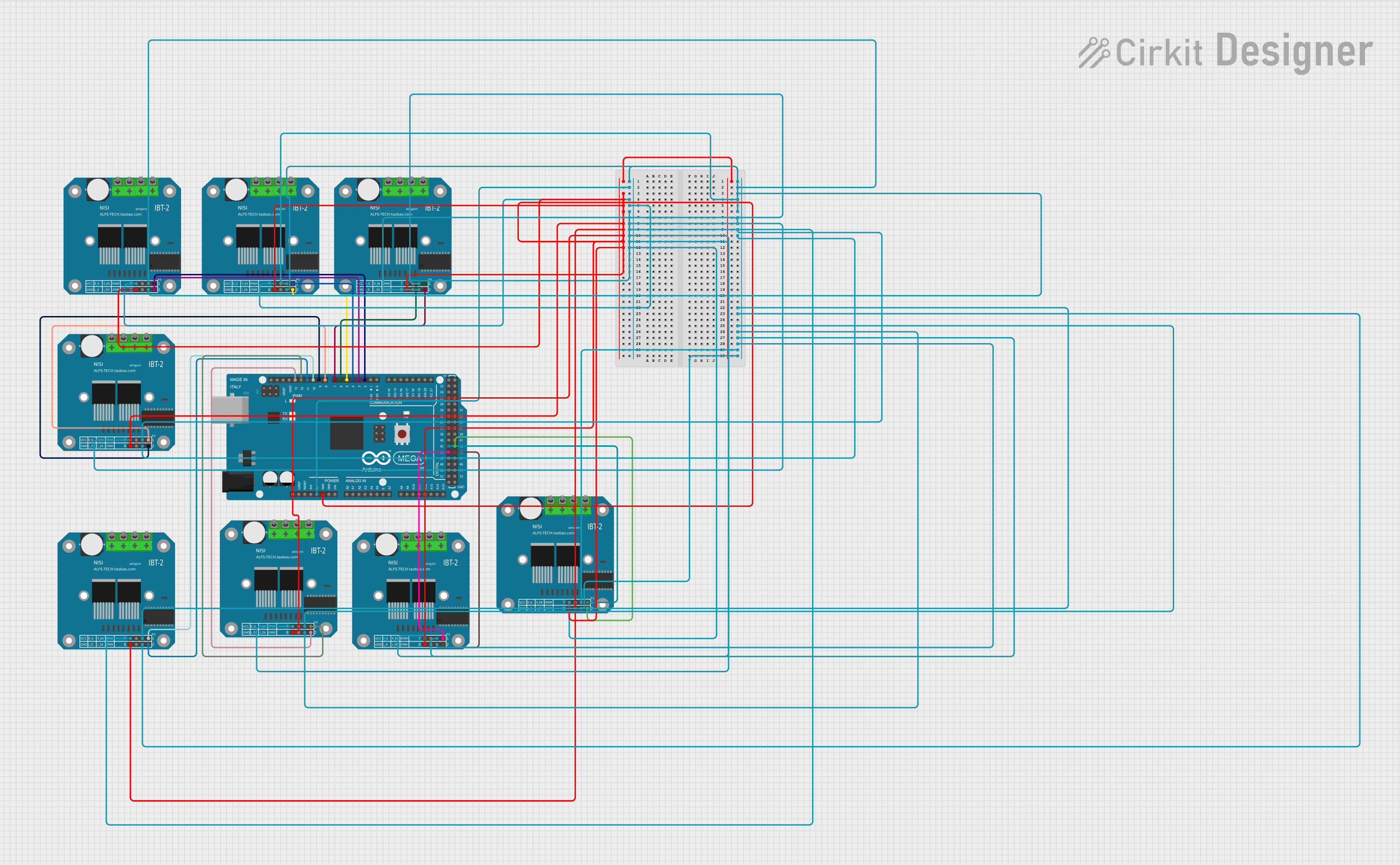
 Open Project in Cirkit Designer
Open Project in Cirkit Designer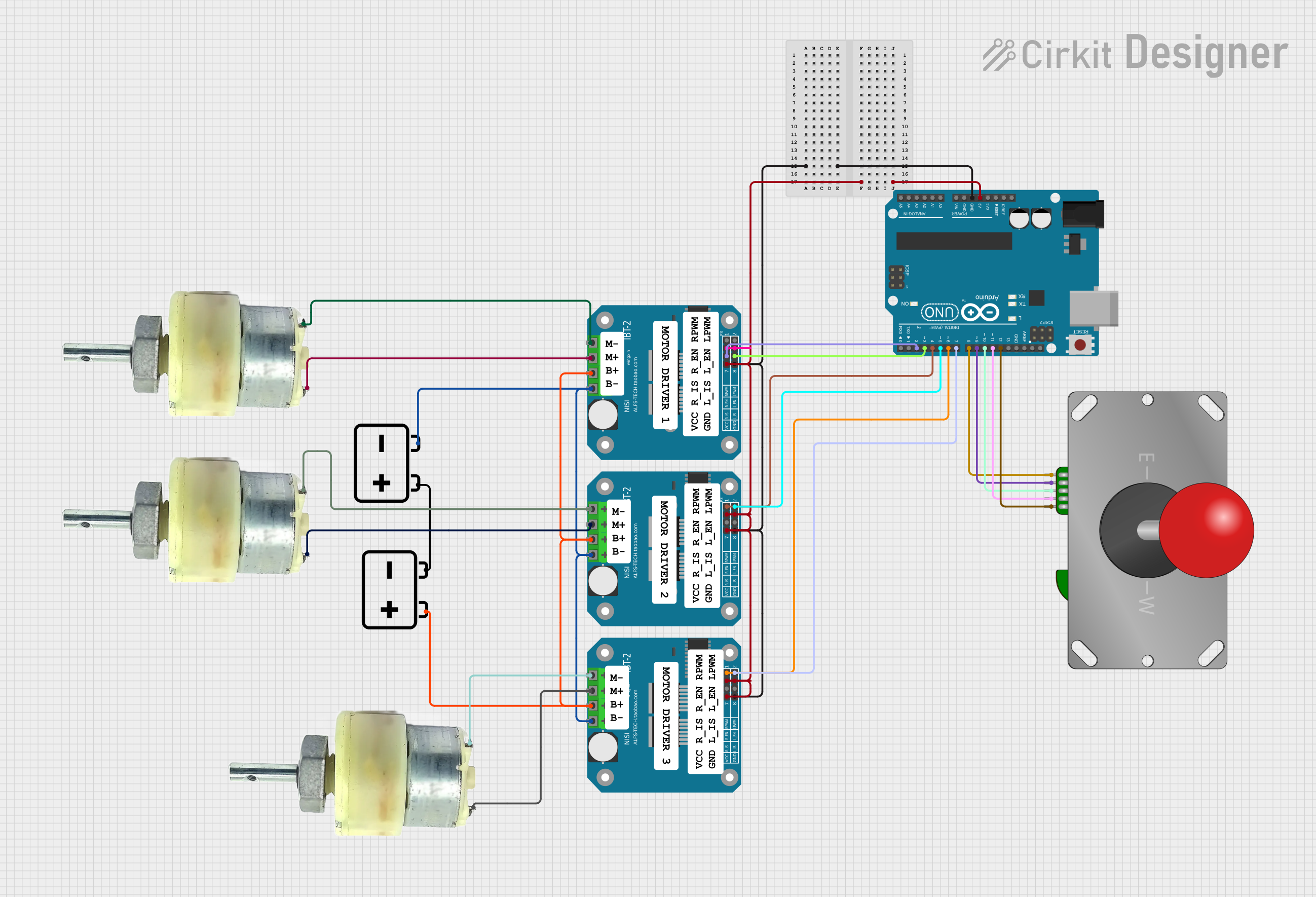
 Open Project in Cirkit Designer
Open Project in Cirkit Designer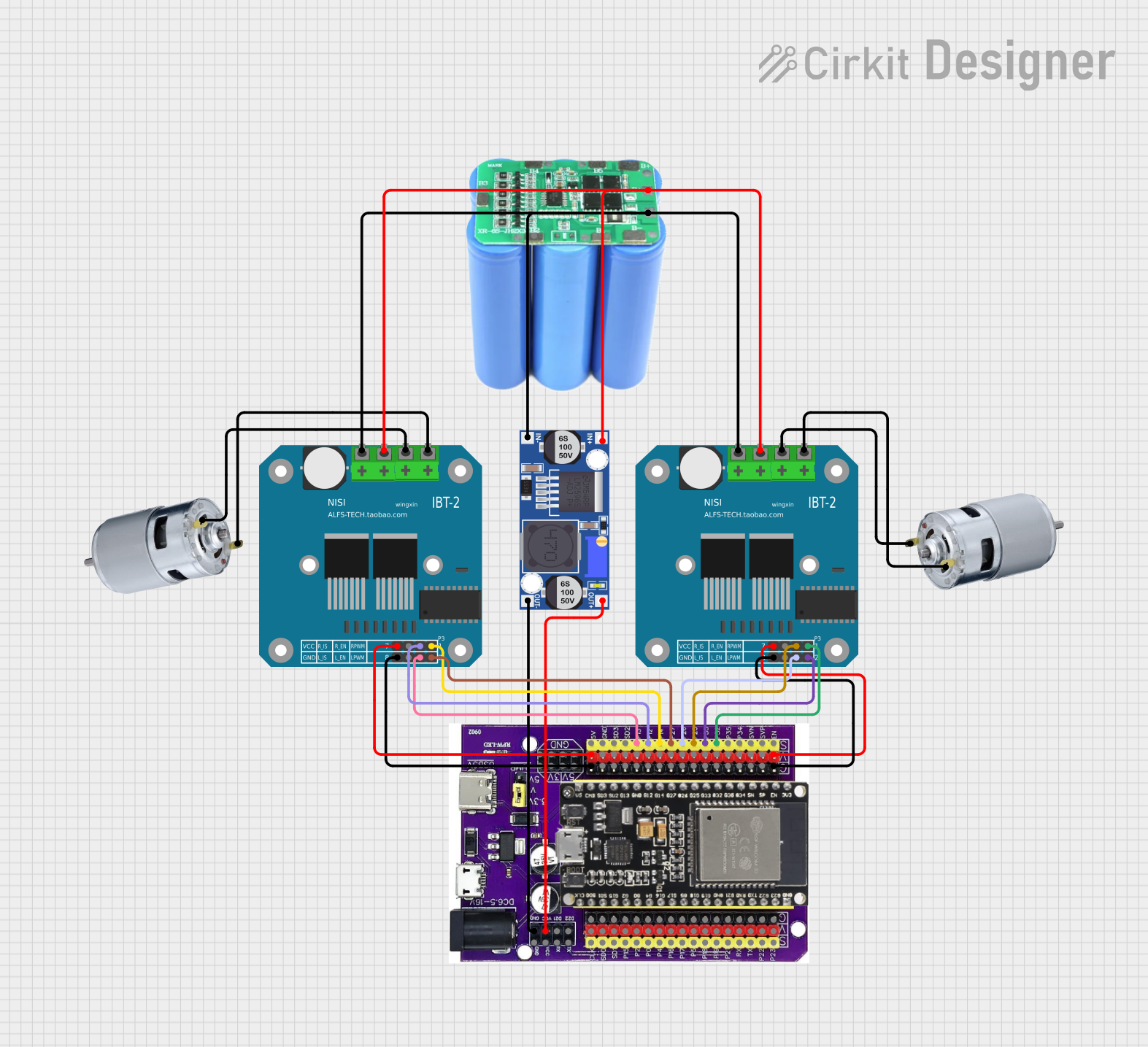
 Open Project in Cirkit Designer
Open Project in Cirkit DesignerExplore Projects Built with BTS7960 Motor Driver

 Open Project in Cirkit Designer
Open Project in Cirkit Designer
 Open Project in Cirkit Designer
Open Project in Cirkit Designer
 Open Project in Cirkit Designer
Open Project in Cirkit Designer
 Open Project in Cirkit Designer
Open Project in Cirkit DesignerCommon Applications
- Robotic systems
- Electric vehicles
- Conveyor belts
- Industrial automation
- High-power motor control in DIY projects
Technical Specifications
The BTS7960 motor driver is designed to handle high-current loads and offers robust performance. Below are its key technical details:
| Parameter | Value |
|---|---|
| Operating Voltage | 5V logic, 6V–27V motor supply |
| Maximum Continuous Current | 43A |
| Peak Current | 50A |
| PWM Frequency | Up to 25kHz |
| Logic Level Voltage | 3.3V or 5V compatible |
| Overcurrent Protection | Yes |
| Thermal Shutdown | Yes |
| Dimensions | 43mm x 45mm x 28mm |
Pin Configuration and Descriptions
The BTS7960 module has multiple pins for motor control and power connections. Below is the pinout:
Control Pins
| Pin Name | Description |
|---|---|
| R_EN | Enables the right side of the H-bridge |
| L_EN | Enables the left side of the H-bridge |
| R_PWM | PWM input for controlling the right motor side |
| L_PWM | PWM input for controlling the left motor side |
| VCC | 5V logic power supply |
| GND | Ground connection for logic |
Power and Motor Pins
| Pin Name | Description |
|---|---|
| B+ | Positive motor power supply (6V–27V) |
| B- | Ground for motor power supply |
| M+ | Positive terminal of the motor |
| M- | Negative terminal of the motor |
Usage Instructions
The BTS7960 motor driver is straightforward to use in a circuit. Below are the steps and best practices for integrating it into your project:
Connecting the BTS7960
- Power Supply: Connect the motor power supply to the
B+andB-terminals. Ensure the voltage is within the 6V–27V range. - Motor Connection: Attach the motor terminals to the
M+andM-pins. - Logic Power: Provide 5V to the
VCCpin and connect theGNDpin to the ground of your microcontroller. - Control Pins: Connect the
R_EN,L_EN,R_PWM, andL_PWMpins to the corresponding GPIO pins of your microcontroller.
Example: Using BTS7960 with Arduino UNO
Below is an example of how to control a DC motor using the BTS7960 and an Arduino UNO:
// Define control pins for the BTS7960 motor driver
#define R_EN 7 // Right enable pin
#define L_EN 8 // Left enable pin
#define R_PWM 9 // Right PWM pin
#define L_PWM 10 // Left PWM pin
void setup() {
// Set control pins as outputs
pinMode(R_EN, OUTPUT);
pinMode(L_EN, OUTPUT);
pinMode(R_PWM, OUTPUT);
pinMode(L_PWM, OUTPUT);
// Enable both sides of the H-bridge
digitalWrite(R_EN, HIGH);
digitalWrite(L_EN, HIGH);
}
void loop() {
// Rotate motor forward
analogWrite(R_PWM, 200); // Set speed (0-255)
analogWrite(L_PWM, 0); // Stop left side
delay(2000); // Run for 2 seconds
// Rotate motor backward
analogWrite(R_PWM, 0); // Stop right side
analogWrite(L_PWM, 200); // Set speed (0-255)
delay(2000); // Run for 2 seconds
// Stop motor
analogWrite(R_PWM, 0);
analogWrite(L_PWM, 0);
delay(1000); // Pause for 1 second
}
Best Practices
- Use a power supply capable of providing sufficient current for your motor.
- Ensure proper heat dissipation for the BTS7960 module, especially under high loads.
- Use appropriate fuses or circuit breakers to protect your system from overcurrent conditions.
- Avoid sudden changes in motor direction to reduce stress on the driver and motor.
Troubleshooting and FAQs
Common Issues and Solutions
Motor Not Spinning
- Cause: Incorrect wiring or insufficient power supply.
- Solution: Double-check all connections and ensure the power supply meets the motor's requirements.
Overheating
- Cause: Prolonged high-current operation without proper cooling.
- Solution: Add a heatsink or active cooling (e.g., a fan) to the module.
PWM Signal Not Working
- Cause: Incorrect PWM frequency or logic level mismatch.
- Solution: Verify that the PWM frequency is within the module's supported range (up to 25kHz) and that the logic voltage matches the microcontroller's output.
Motor Spins in One Direction Only
- Cause: Faulty or missing connection to one of the control pins.
- Solution: Check the
R_PWMandL_PWMconnections and ensure both are properly configured in your code.
FAQs
Can I use the BTS7960 with a 3.3V microcontroller? Yes, the BTS7960 is compatible with both 3.3V and 5V logic levels.
What is the maximum motor voltage the BTS7960 can handle? The module supports motor voltages between 6V and 27V.
Do I need external diodes for motor protection? No, the BTS7960 has built-in flyback diodes for motor protection.
Can I control two motors with one BTS7960 module? No, the BTS7960 is designed to control a single DC motor. For dual-motor control, you will need two modules.
By following this documentation, you can effectively integrate the BTS7960 motor driver into your projects and achieve reliable motor control.